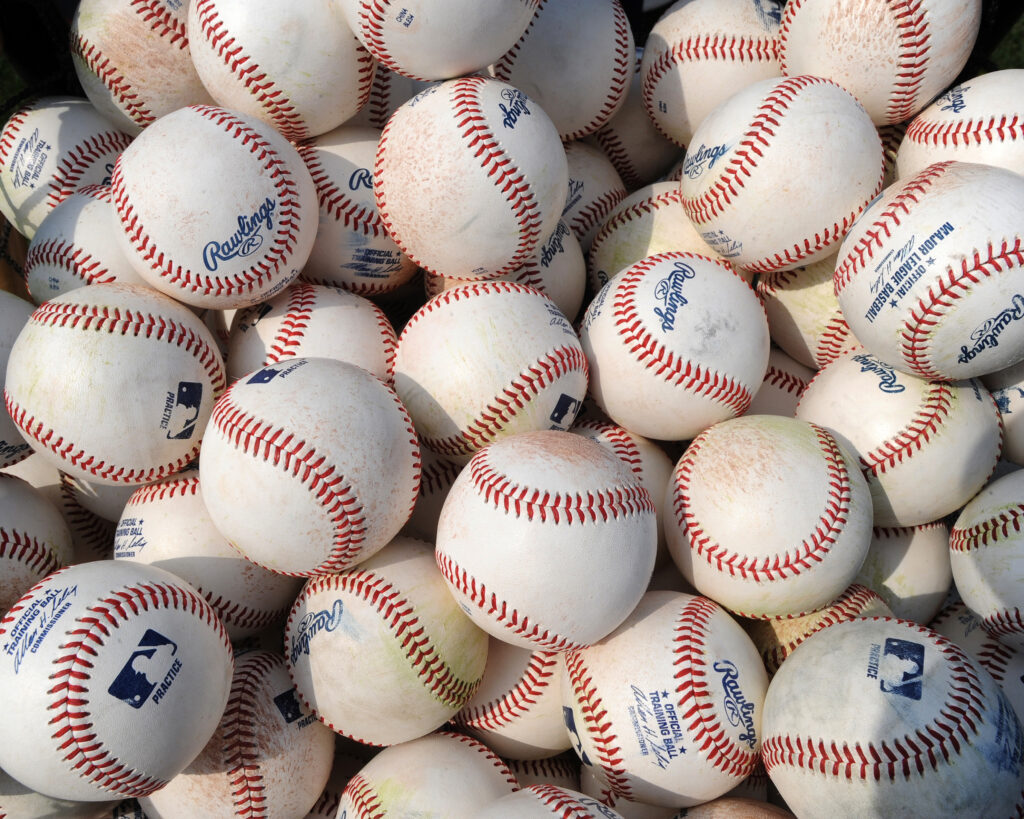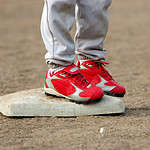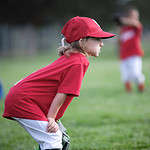Baseball is a sport that requires a combination of strength, speed, and agility. One aspect that often goes overlooked is the importance of weight management. The weight of a baseball can affect the game in various ways, from the performance of the pitcher to the distance of a home run.
The weight of a baseball is standardized by Major League Baseball, with a regulation weight of 5 ounces. However, the weight of a baseball bat can vary greatly depending on the player’s preference and the league’s regulations. A heavier bat can provide more power but can sacrifice speed, while a lighter bat can be swung faster but may not have as much power behind it. It is important for players to find the right balance to optimize their performance.

History of Baseballs
Early Baseballs
The first baseballs were made in the mid-1800s, using a rubber core wrapped in yarn and leather. These early baseballs were smaller and softer than modern baseballs, and they were often used until they became too soft to play with.
World War II Influence
During World War II, baseballs became harder to come by, as many of the materials used to make the balls were needed for the war effort. As a result, baseballs were made with less rubber and a tighter winding of yarn, making them harder and more durable.
Evolution to Today’s Baseball
After the war, baseballs continued to evolve. In 1974, A.G. Spalding introduced a new baseball with a cork center, which was replaced with a rubber core in 1975. In the early 20th century, baseballs were often replaced during games due to their tendency to become soft and misshapen. However, improvements in manufacturing have made modern baseballs more consistent and durable, allowing them to be used for entire games.
Overall, the history of baseballs is closely tied to the history of baseball itself. From the dead ball era to the live ball era, changes in the design and construction of baseballs have had a significant impact on the game. Today’s baseballs are the result of over a century of innovation and refinement, and they continue to be an essential part of America’s pastime.
Baseball Manufacturing
Materials Used
Baseballs are made up of several materials, including rubber, cork, yarn, horsehide, cowhide, and Australian wool. The innermost part of the ball is the rubber core, which is surrounded by a layer of cork. The cork center is then wrapped tightly with yarn, which is usually made from a blend of wool and synthetic rubber.
The outermost layer of the ball is the cover, which is typically made of leather. However, some baseballs have a horsehide cover, which is known for its durability and resistance to moisture. Rawlings is one of the most well-known manufacturers of baseballs, and they use a variety of materials to make their balls.
Manufacturing Process
The manufacturing process for baseballs is a complex one that involves several steps. First, the rubber core is molded into shape and then coated with a layer of adhesive. The cork center is then inserted into the rubber core, and the two are compressed together.
Next, the ball is wrapped tightly with yarn, which helps to give it its shape and structure. The yarn is then coated with a layer of adhesive, and the leather cover is added. The cover is stitched together using a special machine, and the ball is then inspected for quality and consistency.
Overall, the manufacturing process for baseballs is a precise and careful one that requires a great deal of skill and attention to detail. By using high-quality materials and following strict manufacturing standards, manufacturers are able to produce baseballs that are durable, consistent, and reliable.
Baseball Specifications
Size and Weight
Baseball is a sport that requires precision and accuracy. As such, the size and weight of a baseball are crucial to the game. According to the official rules of Major League Baseball, the circumference of a baseball should be between 9 and 9.25 inches, with a weight between 5 and 5.25 ounces. The diameter of a baseball is approximately 2.86 inches.
The size and weight of a baseball are important because they affect the way the ball travels through the air. A heavier ball will travel farther than a lighter ball, and a larger ball will have more air resistance, which will affect its trajectory.
Seams and Stitches
The seams and stitches on a baseball are also important to the game. The seams are raised red stitches that run perpendicular to the surface of the ball. The stitches are double stitches that connect the leather panels of the ball.
The seams and stitches on a baseball help pitchers control the ball’s movement. By gripping the ball in different ways, pitchers can make the ball curve, sink, or rise as it travels through the air. The seams also affect the way the ball bounces and how fielders catch it.
In conclusion, the size, weight, seams, and stitches of a baseball are all important to the game. By following the official rules, players can ensure that the ball is consistent and predictable, allowing them to focus on their skills and strategy.

Regulations and Standards
Major League Baseball Standards
Major League Baseball (MLB) has strict regulations when it comes to the weight of baseballs used in games. According to the official rules of Major League Baseball, a baseball must weigh between 5 and 5.25 ounces. The circumference of the ball must be between 9 and 9.25 inches. The ball must also be made of cork and rubber and covered in two pieces of white cowhide.
The MLB has also implemented regulations regarding the weight of baseball bats. The maximum weight for a bat is 33 ounces, and the maximum diameter is 2.61 inches.
Little League Standards
Little League baseball has its own set of standards when it comes to the weight of baseballs. According to Little League rules, a baseball must weigh between 4 and 5 ounces. The circumference of the ball must be between 8.5 and 8.75 inches. The ball must also be made of cork and rubber, and covered in two pieces of white cowhide.
Little League also has regulations regarding the weight of baseball bats. The maximum weight for a bat is 33 ounces, and the maximum diameter is 2.25 inches.
College Baseball Standards
College baseball follows the same regulations as the MLB when it comes to the weight of baseballs. According to NCAA rules, a baseball must weigh between 5 and 5.25 ounces. The circumference of the ball must be between 9 and 9.25 inches. The ball must also be made of cork and rubber, and covered in two pieces of white cowhide.
The NCAA also has regulations regarding the weight of baseball bats. The maximum weight for a bat is 33 ounces, and the maximum diameter is 2.61 inches.
In conclusion, each level of baseball has its own set of regulations when it comes to the weight of baseballs and bats. It is important for players and coaches to understand these regulations in order to ensure fair play and safety on the field.
Baseball in Gameplay
Baseball is a sport that involves a lot of different skills and techniques. Pitching, batting, and fielding are the three main aspects of the game that players need to master in order to be successful.
Pitching
Pitching is one of the most important elements of baseball. Pitchers are responsible for throwing the ball to the opposing team’s hitters. They need to have good control, speed, and accuracy to be effective. Pitchers also need to be able to throw different types of pitches, such as fastballs, curveballs, and sliders, to keep the hitters off-balance.
Batting
Batting is the act of hitting the ball thrown by the pitcher. Hitters need to have good hand-eye coordination, timing, and power to be successful. They also need to be able to read the pitcher’s pitches and adjust their swing accordingly.
Fielding
Fielding is the act of catching and throwing the ball in the field. Fielders need to be quick, agile, and have good reflexes to make plays. They also need to have good communication skills to work together as a team and make sure everyone knows their responsibilities.
In baseball, scoring runs is the ultimate goal. Home runs are the most exciting way to score, but runs can also be scored by hitting singles, doubles, and triples, as well as by stealing bases and taking advantage of errors made by the opposing team’s defense.
Overall, baseball is a sport that requires a combination of offense and defense. Pitching, hitting, and fielding are all important aspects of the game, and players need to be skilled in all three areas to be successful.
Influence of Baseball Weight
Baseball weight is a crucial factor in the game of baseball. It affects the trajectory, grip, and game strategy of players. In this section, we will explore the influence of baseball weight in these three aspects.
On Trajectory
The weight of a baseball affects its trajectory. A heavier baseball tends to have a lower trajectory, while a lighter baseball has a higher trajectory. This means that a pitcher can use a heavier baseball to produce a sinker or a ground ball, while a lighter baseball can be used to produce a fly ball or a pop-up.
On Grip
The weight of a baseball also affects the grip of a player. A heavier baseball requires a stronger grip, while a lighter baseball requires a lighter grip. This means that a pitcher can use a heavier baseball to develop their grip strength, while a lighter baseball can be used to improve their control and consistency.
On Game Strategy
The weight of a baseball can also affect game strategy. A heavier baseball can be used to generate more power, while a lighter baseball can be used to improve consistency and spin. This means that a pitcher can use a heavier baseball to throw harder, while a lighter baseball can be used to throw more accurate pitches.
In conclusion, baseball weight has a significant impact on the game of baseball. It affects distance, speed, trajectory, grip, power, consistency, spin, seam, curve, bounce, and weighted baseballs. By understanding the influence of baseball weight, players can make informed decisions about their game strategy and improve their performance on the field.
Baseball Variations
When it comes to baseball, there are several variations of the ball that can be used. In this section, we will explore three of the most common variations: Softball, Rubber Baseballs, and Compression Baseballs.
Softball
Softball is a popular alternative to baseball, especially for younger players or those who prefer a smaller ball. Softballs are typically larger and have a lower compression than baseballs, which means they are softer and easier to hit. They are also often made with a yellow cover and have raised seams, which can make them easier to grip and throw.
Rubber Baseballs
Rubber baseballs are another alternative to traditional baseballs. They are typically made with a solid rubber core and a synthetic cover, which makes them more durable than ordinary baseballs. Rubber baseballs are often used for practice or training, as they can be hit and thrown repeatedly without wearing out as quickly as traditional baseballs.
Compression Baseballs
Compression baseballs are designed to mimic the feel of a traditional baseball but with a lower compression. This means that they are softer and easier to hit but still have the same weight and size as a traditional baseball. Compression baseballs are often used for training or practice, as they can help players improve their hitting skills without the risk of injury from a harder ball.
In conclusion, there are several variations of the baseball that can be used, each with its own unique benefits. Whether you prefer a softer ball like a softball, a more durable ball like a rubber baseball, or a ball that mimics the feel of a traditional baseball like a compression ball, there is a ball out there that can suit your needs.
Notable Figures and Events
Babe Ruth
Babe Ruth, also known as “The Sultan of Swat,” is widely considered one of the greatest baseball players of all time. He played for the Boston Red Sox and the New York Yankees during his career and is known for his impressive hitting ability. Ruth set a number of records throughout his career, including the record for most home runs in a season which he set in 1927 with 60 home runs. He was also the first player to hit 500 career home runs.
Hank Aaron
Hank Aaron, also known as “Hammerin’ Hank,” is another legendary baseball player. He played for the Milwaukee and Atlanta Braves and the Milwaukee Brewers during his career. Aaron is best known for breaking Babe Ruth’s home run record in 1974 when he hit his 715th home run. He finished his career with 755 home runs, a record that stood until Barry Bonds broke it in 2007.
World Series
The World Series is the championship series of Major League Baseball and is played annually between the American League and National League champions. The first World Series was played in 1903 and has been held every year since, except in 1904 and 1994. The New York Mets won the World Series in 1969 and 1986, while the Boston Red Sox won the World Series in 2004, 2007, 2013, and 2018.
In conclusion, Babe Ruth, Hank Aaron, and the World Series are all notable figures and events in baseball history. Their achievements and contributions have helped shape the sport into what it is today.
Current Trends and Future of Baseballs
Baseball weight has been a topic of discussion for many years. The evolution of baseballs has been a constant process, with the aim of improving the game day experience and ensuring player safety. In recent years, there have been significant changes in the weight of baseballs, and this trend is expected to continue in the future.
One of the most notable changes in baseball weight was made in 2019, where the ball was made slightly lighter. The aim was to reduce the drag on the ball, which would result in more home runs and an overall increase in offensive play. This change was met with mixed reactions from players and fans alike, but it has undoubtedly had an impact on the game.
In addition to changes in weight, there have also been advancements in the technology used to manufacture baseballs. This has resulted in more consistent ball flight and reduced variability in the weight of each ball. These improvements have contributed to a safer playing environment for players, as they can better predict the trajectory of each ball.
Looking to the future, there is likely to be continued experimentation with baseball weight and manufacturing techniques. The goal will always be to improve the game day experience while maintaining player safety. As technology advances, we may see even more precise manufacturing processes that result in even greater consistency in ball weight and flight.
In conclusion, the current trends and future of baseballs are closely tied to the evolution of the game and the safety of its players. While changes in weight and manufacturing techniques may be met with mixed reactions, they are ultimately made with the goal of improving the game. As the game continues to evolve, we can expect to see continued experimentation and innovation in this area.
Frequently Asked Questions
What is the weight of a little league baseball?
A little league baseball typically weighs between 4 to 5 ounces. The exact weight may vary depending on the league rules and regulations.
How much does an official MLB baseball weigh?
An official Major League Baseball (MLB) baseball weighs around 5 ounces. This weight is specified in the official rules of MLB.
Do baseballs have different weights?
Baseballs used in different leagues may have slightly different weights. For example, college baseballs may weigh around 5.25 ounces, while high school baseballs may weigh around 5 ounces. However, within a particular league, all baseballs should have the same weight.
What is the mass of a baseball?
The mass of a baseball is approximately 145 grams or 0.145 kilograms.
How much does a baseball bat weigh?
The weight of a baseball bat depends on its size and material. A typical wooden baseball bat weighs around 32 to 36 ounces, while a metal or composite bat may weigh around 27 to 30 ounces.
How much does a softball weigh?
A softball used in fastpitch softball typically weighs around 6 to 7 ounces, while a slowpitch softball may weigh around 11 to 12 ounces. The exact weight may vary depending on the league rules and regulations.
- UCLA Softball: Let’s Go Bruins! - February 12, 2024
- Youth Softball Helmet Buying Guide: Keep ‘Em Safe - February 12, 2024
- Youth Softball Pants: Our Top Picks for Your Top Player - February 12, 2024








